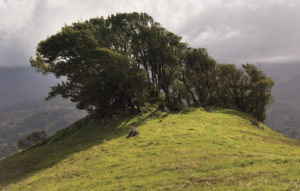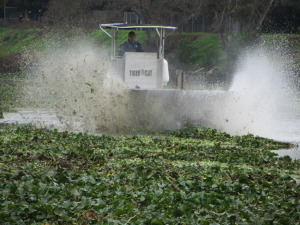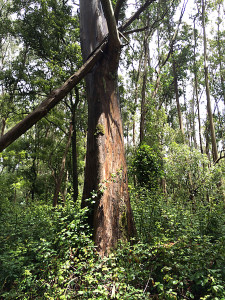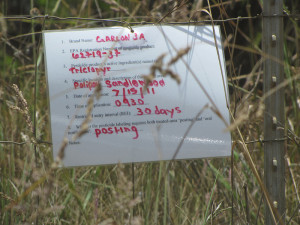Thornewood Open Space Preserve off Highway 84 above the town of Woodside isn’t easy to find–unless you’re a weed. When a volunteer discovered a pretty, bright-green perennial grass at Thornewood in 2003, the alarm bells went off, especially when land managers discovered that slender false brome had already marched across 30 acres in the preserve. The Woodside area is the only site in California where the plant has been found, but this invasive perennial bunchgrass native to Eurasia and North Africa has infested 10,000 acres in Oregon. The tenacious plant thrives in a broad range of habitat, is resistant to fire control, isn’t appealing to wildlife or livestock, and can quickly become the dominant plant in a landscape.
“We’re seeing it do exceptionally well in redwoods, but it can survive in almost any habitat,” said Ellen Gartside of Midpeninsula Regional Open Space District (MROSD), which owns Thornewood. “We want to prevent this from becoming a bigger problem throughout the state.”
Park workers have since removed 90 to 95 percent of the infestation at the site. They are also working with private landowners in a program that includes reimbursement for treatments. In three years, 66 private property owners have collectively treated 183 acres through the eradication program. Park neighbor Mary Zvirblis sought help after using an MROSD brochure to help identify slender false brome on her property. A team came out to map the locations of the weed and began a treatment program.
Treatment can include pulling by hand, sheet mulching, or herbicides. Any weeds pulled by hand should not be composted or put into the garbage, but placed and sealed in plastic bags, which MROSD will pick up and dispose of properly.
Recreational visitors in Woodside should follow the same protocol used to help stop the spread of sudden oak death: Stay on trails; keep dogs leashed; don’t collect plants; avoid muddy areas; and clean dirt, mud, and seeds off shoes, pets’ paws, and horses’ hooves before entering and leaving a protected area.
To identify slender false brome, look for a bunchgrass that stays bright green later than other grasses, has fine hairs on its leaf margins with seeds attached to the stem (nearly all year long), and has sheaths that open to the base. The droopy leaves are about a half-inch wide.
If you see the plant, contact Ellen Gartside at egartside@openspace.org. Learn more at the brome project page on openspace.org.

.jpg)



